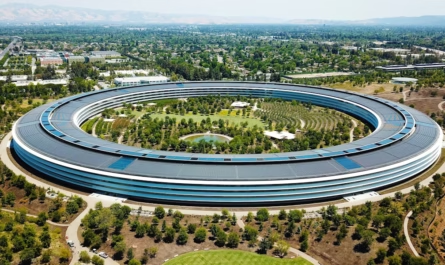The United States has long been a global leader in technological advancement and innovation. From the creation of the internet to space exploration, American ingenuity has played a pivotal role in shaping the modern world. But while the private sector often gets the spotlight for its innovations, the U.S. government has been a major driver behind many of these breakthroughs. Through research funding, regulatory frameworks, public-private partnerships, and strategic investments, the government has shaped the technological landscape in profound ways. In this article, we will explore the multifaceted role of the U.S. government in advancing technology and innovation, both historically and in the present day.
1. Government as a Catalyst for Research and Development (R&D)
The U.S. government has been a cornerstone in funding research and development (R&D) across a variety of scientific and technological fields. Through agencies like the National Science Foundation (NSF), the National Institutes of Health (NIH), the Department of Energy (DOE), and the Defense Advanced Research Projects Agency (DARPA), billions of dollars are allocated each year to fund cutting-edge research. These government investments have often led to major technological breakthroughs that have benefited not only the U.S. but the world.
For example, DARPA, the research and development arm of the U.S. Department of Defense, has been instrumental in pioneering technologies like the internet (originally ARPANET), GPS, and advanced robotics. The agency’s ability to take on high-risk, high-reward projects has resulted in the development of technologies that eventually have wide-ranging applications beyond military needs.
Moreover, the NIH’s substantial investment in biomedical research has led to advancements in medical devices, pharmaceuticals, and biotechnology. Breakthroughs like mRNA vaccines, which were developed and brought to market in record time during the COVID-19 pandemic, are a direct result of years of government-funded biomedical research.
2. Fostering Public-Private Partnerships
The U.S. government has long understood the importance of collaboration between the public and private sectors. Public-private partnerships (PPPs) have been critical in advancing technologies in sectors ranging from space exploration to clean energy. These partnerships allow for the blending of public funding and strategic direction with private-sector expertise and innovation.
One of the most well-known examples of this collaboration is NASA’s partnerships with private space companies like SpaceX and Blue Origin. In the past, NASA was the sole provider of space exploration missions. However, the advent of private companies providing launch capabilities and exploring commercial space travel has dramatically reduced costs and accelerated progress in space exploration. The government’s investment in SpaceX, for example, helped develop reusable rocket technology, which has the potential to revolutionize space travel.
Similarly, in the clean energy sector, the U.S. Department of Energy has been instrumental in funding research into renewable energy technologies, such as solar, wind, and battery storage. Through initiatives like the Energy Innovation Hub program and direct collaborations with private companies, the government is helping drive the transition to a cleaner, more sustainable energy future.
3. Regulation and Policy Innovation
While innovation is often driven by private enterprise, government regulation and policy play a significant role in shaping the direction of technological progress. The U.S. government establishes rules and frameworks that ensure technology is developed and deployed in ways that protect public safety, security, and privacy. These regulations also create an environment where innovation can thrive by providing clear guidelines for businesses to follow.
For instance, the Federal Communications Commission (FCC) regulates telecommunications and broadband services, ensuring fair competition and encouraging the expansion of high-speed internet access across the country. Policies like net neutrality have been debated extensively, with the government playing a central role in ensuring that the internet remains open and accessible to all.
In the realm of technology, the government also plays a crucial role in setting standards for emerging fields. The National Institute of Standards and Technology (NIST) provides crucial guidelines in areas like cybersecurity, artificial intelligence (AI), and quantum computing. These standards help ensure that new technologies are deployed in ways that are secure, reliable, and equitable.
Furthermore, government policies around intellectual property (IP) and patents shape the incentives for innovation. The U.S. Patent and Trademark Office (USPTO) protects the rights of inventors, ensuring that creators and companies can benefit from their innovations and that new ideas can be widely shared and built upon.
4. Investing in Emerging Technologies
As new technologies emerge, the U.S. government has taken a proactive role in ensuring the country remains at the forefront of global innovation. The government has identified areas like artificial intelligence, quantum computing, biotechnology, and clean energy as critical sectors for investment and research.
In recent years, the U.S. has focused on maintaining leadership in AI, which has far-reaching implications for national security, the economy, and public health. Through initiatives like the National AI Initiative Act, the U.S. is working to establish a coordinated federal strategy to promote AI research, development, and workforce education. The government’s funding of AI research through agencies like the NSF and DARPA has spurred innovation in areas like autonomous vehicles, machine learning, and natural language processing.
Similarly, the U.S. government has made significant investments in quantum computing, which promises to revolutionize fields like cryptography, materials science, and pharmaceuticals. The National Quantum Initiative Act of 2018 created a framework for federal investment in quantum research, supporting universities, national laboratories, and private-sector collaborations. Quantum computing could potentially solve problems that are currently beyond the reach of classical computers, such as modeling complex molecules for drug development or breaking encryption systems.
The Biden administration has also placed a significant emphasis on addressing climate change through technological innovation. The Infrastructure Investment and Jobs Act (2021) includes funding for green technology, clean energy infrastructure, and electric vehicle (EV) development. The U.S. Department of Energy’s Advanced Research Projects Agency-Energy (ARPA-E) is funding high-risk energy technologies like carbon capture and energy storage that could help transition the U.S. to a low-carbon economy.
5. Education and Workforce Development
Another key area where the U.S. government influences technological advancement is through education and workforce development. The government’s investments in STEM (Science, Technology, Engineering, and Mathematics) education programs aim to cultivate the next generation of innovators and ensure the U.S. has a workforce capable of adapting to and driving technological change.
Programs like the National Science and Mathematics Access to Retain Talent (SMART) Grants, and initiatives from the Department of Education, aim to increase the number of students pursuing degrees in STEM fields. Additionally, efforts to expand access to computer science education in K-12 schools ensure that all students are equipped with the skills they need to succeed in the digital economy.
The government is also addressing the need for a skilled workforce in rapidly emerging sectors like AI, cybersecurity, and renewable energy. Through job retraining programs, workforce development grants, and partnerships with industry leaders, the U.S. government helps workers transition to new technologies and industries, ensuring that the nation remains competitive on the global stage.
Conclusion: A Shared Responsibility for Innovation
While the private sector is often the engine of innovation, the U.S. government plays an indispensable role in creating the conditions for technological advancements to thrive. From funding basic research to setting regulatory standards, promoting public-private partnerships, and investing in emerging technologies, the government has been instrumental in shaping the nation’s technological landscape.
As we move into the future, the government’s role will be even more critical as it addresses challenges like cybersecurity, climate change, and the ethical implications of emerging technologies. With continued investment in research, education, and infrastructure, the U.S. government will ensure that the nation remains a global leader in technology and innovation for years to come.
The future of technology is not only about groundbreaking inventions but also about the collaborative efforts that support and guide their development. The U.S. government will continue to be a key player in this shared journey toward a more innovative, secure, and sustainable world.



